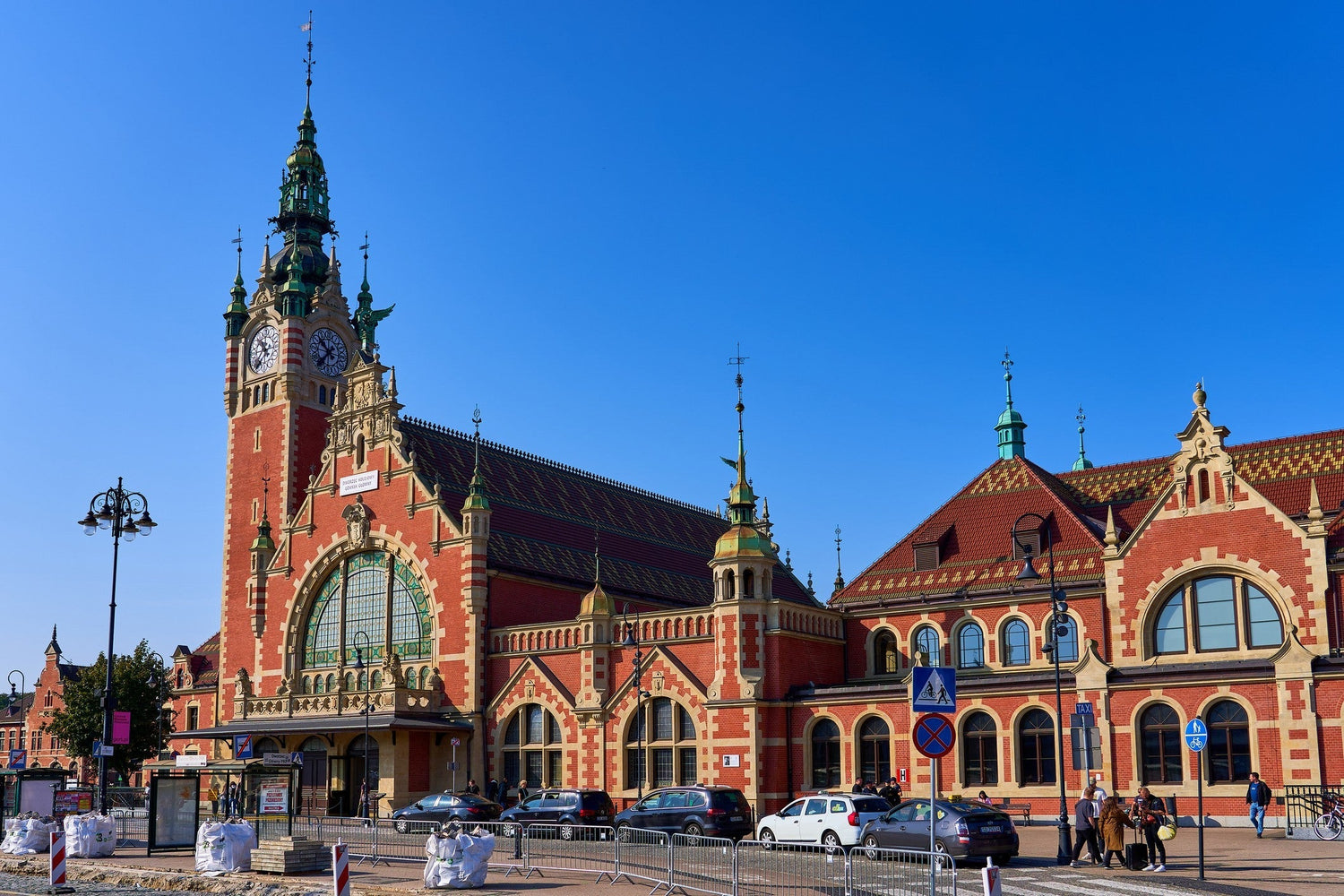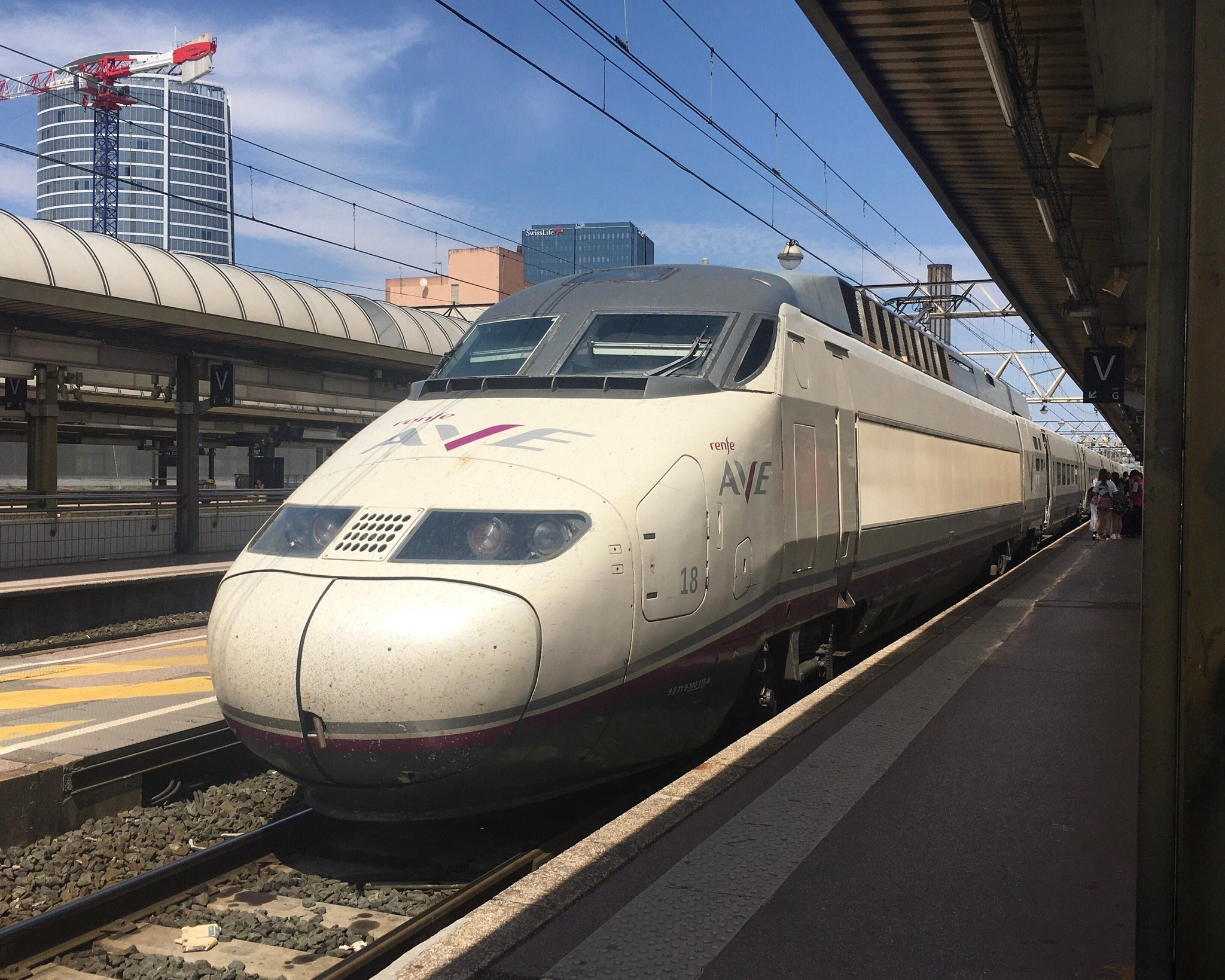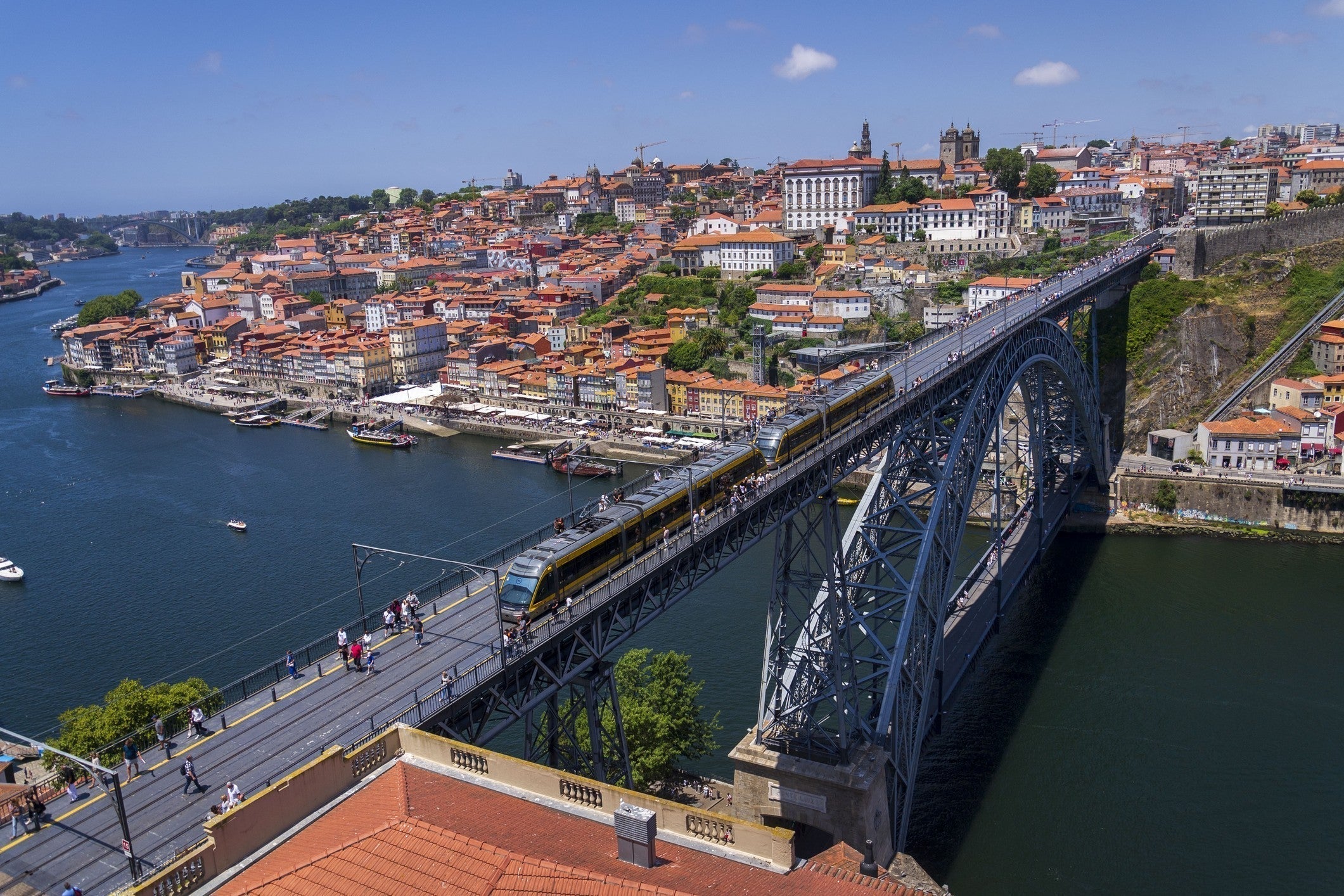Polish cities are becoming increasingly popular as holiday destinations thanks in part to the country’s economic resurgence and more recently Jesse Eisenberg’s moving comedy, A Real Pain. Add to that reduced journey times and some of the finest dining cars in Europe and there has never been a better time to travel around Poland by train. In this month's journey, we travel from Gdańsk in the north to Kraków in the south, which now takes just over five hours (it used to take more than eight). We will also mention some of the detours and side-tracks along the way.
Most travellers arriving by train will use the city's main railway station, Gdańsk Główny, a beautiful 19th-century structure located just a few minutes east of the city centre - this station has undergone extensive modernisations in recent years, restoring its brick gothic facade to its full glory. Long-distance intercity trains are operated by the national rail company PKP. Shorter trips are managed by rail companies from each region so the type of train you travel on can vary from ultra-modern to older traditional carriages. If you are travelling with a Eurail or Interrail pass it may not be valid with certain operators so it is worth checking in advance.
Poland’s largest port, Gdańsk has a unique feel that sets it apart from other cities in the country due to its historically diverse population of Jews, Germans and Poles. The Old Town has been smartened up in recent years and is full of characterful restaurants, cafes and amber shops (the surrounding area is the rich source of this semi-precious stone) set amidst the picturesque Burgher houses that line its streets. Although substantial parts of the city were reconstructed following mass devastation during the Second World War, the Main Town still looks much as it did 300 years ago and one of its primary attractions is St Mary’s Basilica, one of the three largest churches in the world. Head to the top for breathtaking views over the city.
The city has stacks of interesting culture. Visit the synagogue in Wrzeszcz to get a sense of its Jewish heritage or follow in German writer Günter Grass’s footsteps through the city of his birth. Should you have time, a trip up the coast to Sopot gives a sense of the grandeur of a 19th-century beach resort (with a host of great restaurants to make it a 21st-century joy to visit).
Departing from Gdańsk Główny the first stop is Tczew on the Vistula River, known for its attractive old town and impressive 19th-century bridges. The city is a major river port and railway junction with links to Warsaw, Bydgoszcz, Poznań (from where you can head on to Berlin). The next section is particularly scenic as you pass the turreted road bridge of Tczew and the equally breath-taking bridge across the River Nogat at Malbork. The quiet, rural town of Malbork boasts the largest Gothic castle in Europe, listed on the UNESCO World Heritage List and is well worth a visit. Malbork's railway station is also a sight in itself having been beautifully renovated and has wonderful wood panelling, embossed ceilings and pseudo-medieval decor.
From Malbork there is a side-track to the historic city of Olsztyn (Table 1035) with its imposing 14th-century cathedral and red-brick castle. The city is situated on the banks of the Lyna River and is surrounded by a network of forests and lakes making it a popular leisure location.
Continuing on our route south from Malbork it's a short 2-3 hour journey through the towns of Iława and Działdowo to the capital, Warsaw, the hub of Poland’s rail network - despite its geographical position in the country’s east. International trains run direct to Prague, Vienna, Budapest, Hrodna, Berlin, and many other cities. The main station for tourist purposes is Warszawa Centralna Station which is located next to Centrum Metro Station and a number of tram and bus stops for easy transport around the city. Other large stations in the city are Warszawa Wschodnia in the east and Warszawa Zachodnia in the west.
Having been almost completely destroyed during World War II, the city has been rebuilt and is now an interesting mix of diverse architecture with modern skyscrapers, royal palaces and the charming narrow streets of the reconstructed Old Town which is a UNESCO world heritage site. Its former communist blocks have now become something of a hipster hub full of excellent coffee shops and bars. Their contrast to the historical old town only elevates a sense of counter culturism. Modern interactions with the Old Town are not new, and any transport enthusiasts should take a few minutes to use the city’s oldest elevator, taking pedestrians from the river valley up to the city’s main square (there is also an interesting exhibition of its original form in the room next to the loos!)
There are two options for trains from Warszawa to Kraków: the modern high-speed line with a journey time of just 2-3 hours (Table 1065) or you could take the slower route via Radom and Kieice which takes just over 4½ hours (Table 1067). The fastest trains are branded Express Intercity Premium (EIP) on which seat reservation is compulsory. The scenery is not that inspiring on either line so we recommend enjoying the comfort and speed of the sleek pendolino trains as you travel towards Poland's second largest city. Take time to enjoy their famous dining cars, but be warned that these are very popular. It sometimes makes sense to time your meal to slightly eccentric times (and feel free to ask fellow passengers if you can share a table).
The historic city of Kraków offers plenty to see and do including day trip options beyond the city boundaries. Its main sights are concentrated on the north bank of the Vistula River where historic buildings and monuments abound. The main draws for tourists are the hilltop Wawel Castle and Cathedral as well as the Old Town which contains soaring churches, impressive museums and the vast Rynek Główny, Europe’s largest market square. Local tour companies offer an eclectic mix of day-long excursions where you can explore the high Tatra peaks, lakes with inland beaches and national parks in this beautiful corner of Europe. Two of the most popular day trips from Kraków are visiting the sombre remains of the Auschwitz-Birkenau concentration camp located in the town of Oświęcim. Trains depart frequently but some visitors may find the organised bus tours more convenient as the price usually includes travel, entry and a guide.
Should you want to explore Krakow’s communist heritage, Nowa Huta is one of Poland’s best surviving examples of a socialist planned town. It is a short trip from the city centre and has a buzzing cultural scene, much beloved by the city’s student population.



